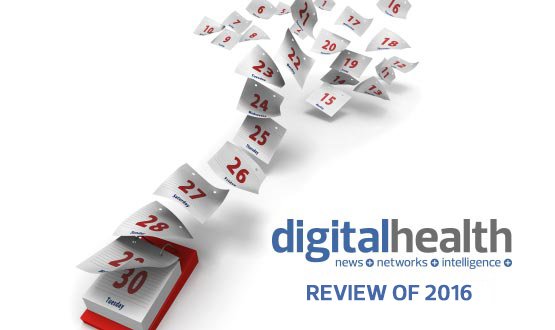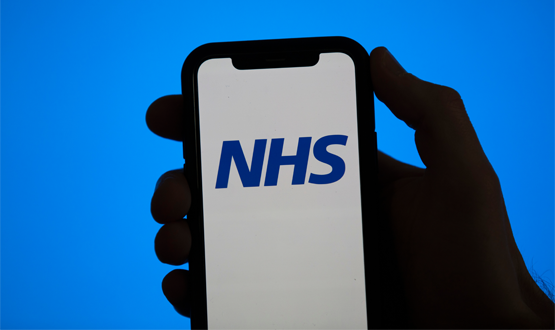Whatever happened to Open Source in 2016?
- 29 December 2016

It has been a year of upheaval and change. The year of Brexit and Trump, of Bowie and Prince passing. In the NHS it has been marked by intense pressures as budget cuts and efficiency savings have begun to bite.
But a quieter casualty of the year in health IT has been open source in the NHS.
Last year, open source was being championed by NHS England as a key part of the NHS’s digital future and was deeply embedded within the tech fund rounds.
Following the shortcomings of the National Programme for IT, which was heavily reliant on big suppliers, open source was sold as a path to local clinical buy-in. The argument was that the NHS could develop software cheaply for its own needs, rather than adapt to an American model of health.
Leaders like Tim Kelsey and Beverley Bryant spent a lot of time and effort trying to convince suppliers to make their products open source and bring new entrants into the market.
Hewlett Packard, for instance, was planning to bring an open source Spanish electronic medical record to the NHS, provided there was an at scale commitment.
Slovenian company Marand were touted as another potential provider, offering a system already supporting the City of Moscow.
NHS England invested in an open source team, ran open source events, helped fund the Apperta and the open source testbed platform Ripple, and the Code4Health community.
They were tiny investments for an NHS that spends £2 billion a year on IT, information systems and related staff (Digital Health Intelligence data) but still encouraging for open source enthusiasts. But even these small steps have faltered.
The open source team has been disbanded; code4health has morphed into a much wider interoperability initiative.
The market share of open source clinical systems has barely budged in the past year. Taunton & Somerset NHS Foundation Trust are using open source IMS Maxims EPR and Blackpool Teaching Hospitals NHS Foundation Trust is planning to do the same.
Moorfields Eye Hospital NHS Foundation Trust’ OpenEyes ophthalmology EPR, for many the best example of the NHS developing and deploying open source, has, after being extensively reworked, yet to be widely rolled-out.
With the above exceptions, there remains no NHS-adapted open source clinical solutions for general use in acute, community, mental health or primary care settings.
The most significant open source initiative still going in the NHS is Endeavour Health, which is working with CCGs in East London to build at scale health information exchange and population health management platform. The project is personally funded by digital pioneer David Stables, co-founder of EMIS.
Open source has the greatest market share in the NHS infrastructure, with the NHS spine and NHS Choices both running on open source platforms, but these are only two services of many.
So, what happened? Where has all the early promise gone?
In partly down the changes in leadership. Tim Kelsey, the former NHS England head of digital, believed in open data, and consequently the potential of open source.
Beverley Bryant, another champion particularly for Code4Health, has moved from a strategy and policy role at NHS England to programme delivery role at NHS Digital.
The new senior digital leadership team at NHS England – of Matthew Swindells, Will Smart and Keith McNeil – are more focused on trust scaling systems already in use, and proven, as soon as possible, based on the sustainability and transformation plans and digital exemplar programme.
While there is strong case for improved productivity from deploying some of these bigger established supplier, many have been in the UK for decades, it’s less clear there is the money to roll the systems out across the NHS.
Cambridge University Hospitals NHS Foundation Trust’s eHospital programme is costing £200 million, tens of millions of which went on EPIC EPR. The funds to replicate that across the NHS are simply not there.
Some have argued that open source can be the cheaper alternative the NHS can afford.
In a recent column for Digital Health News, Ewan Davis and Tony Shannon call for national investment in just such an open platform, a call since taken up by CCIO Network chair Joe McDonald.
One potential area where open source might have a new opportunity in 2017 is the exemplar programmes for mental health, community and specialist trusts. In mental health, for instance, there is significant frustration about the current systems available.
The mental health exemplar programme could provide an opportunity for mental health trusts to collaborate on the development of a next generation mental health system.
The alternative of not putting money into open source alternative is to be perpetually locked into expensive proprietary and largely international suppliers, with very little ability for the NHS to influence their priorities or pricing.
No matter how good the suppliers, it’s a form of lock-in the NHS can ill-afford.




